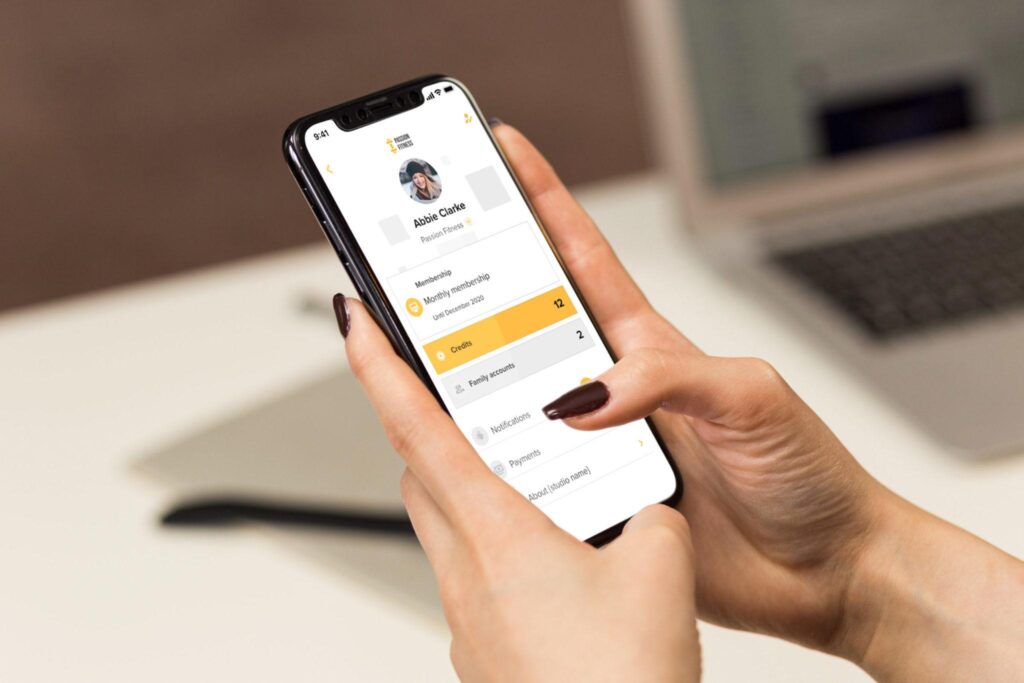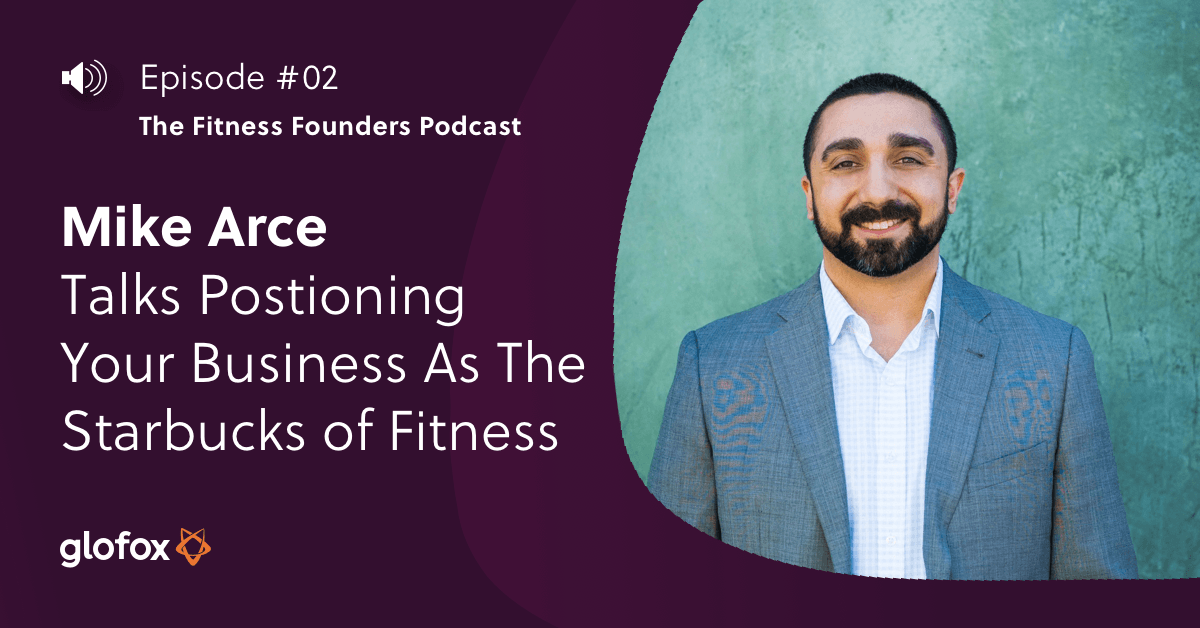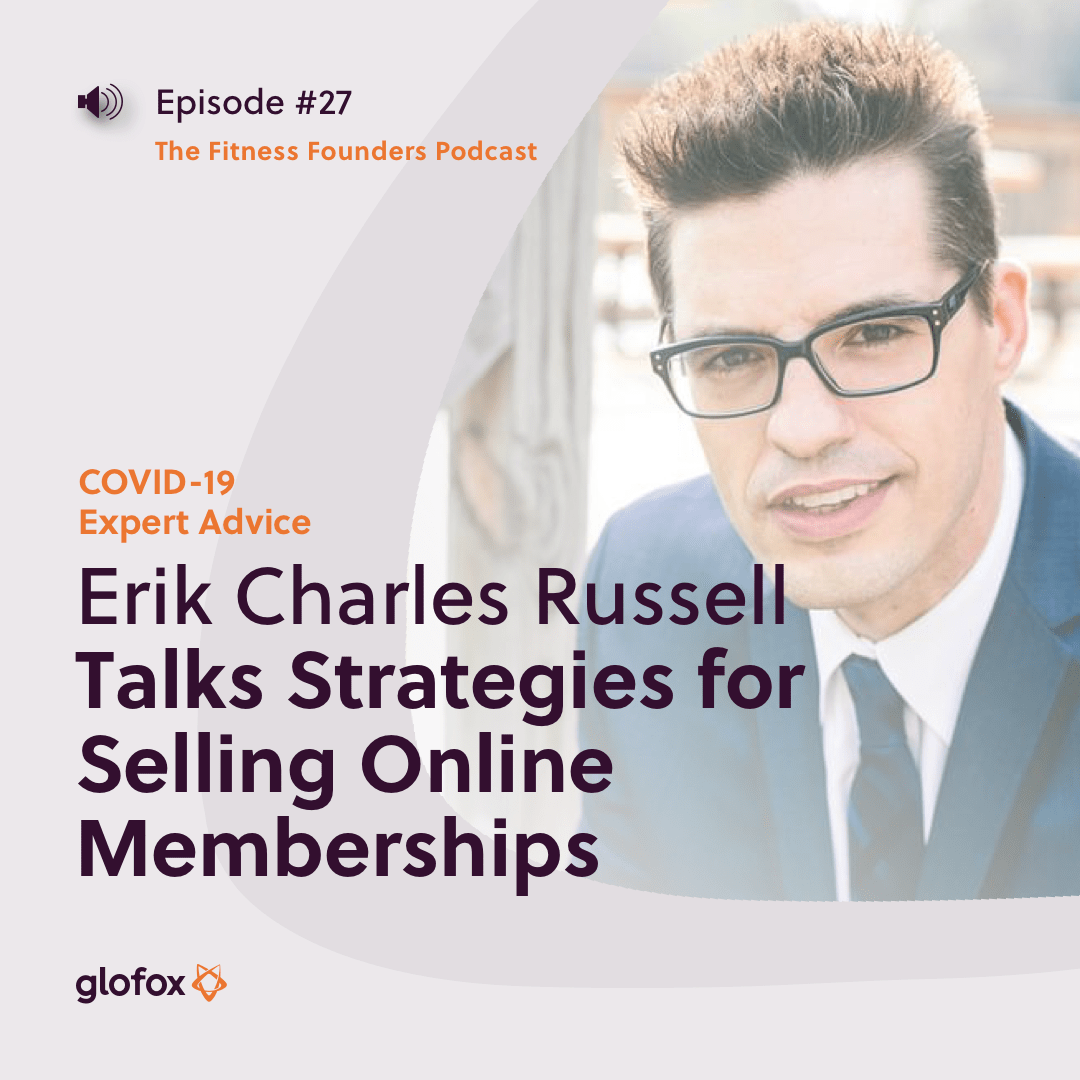As a matter of survival, the majority of fitness businesses have had to transition into offering online workouts. As a gym owner, steadying the ship and retaining the majority of your members should be your first priority. Once you’ve achieved this, you need to look towards growing your business in this emerging new world. This means developing an effective sales strategy for a new type of fitness industry.
Recently, we’ve spoken with many leading industry experts about overcoming the challenges fitness businesses now face. We’ve also been reaching out to our customers to learn from their experiences so far. From this, we’re able to understand what’s working for gyms and studios, what’s not, and what information and resources they need to succeed at this time.
In this article, we’ve curated all of these insights into five key points for selling your online classes. The advice is also featured in our webinar on selling your expertise online, which you can access here.
Skip ahead to:
- Create a Valuable Offer
- Learn to Sell on the Phone
- Make the Most of Referrals
- Re-engage Your Database
- Structure Your Pricing Correctly
1. Create a Valuable Offer
Right now, people have more time on their hands than ever, and as a result, their buying behavior has changed. When it comes to online fitness, people aren’t necessarily looking for the cheapest option or the most premium, they’re looking for value.
People are happy to pay more for a service that addresses their needs and provides value beyond the initial purchase. In the latest episode of The Fitness Founders Podcast, we spoke with Jack Thomas, owner of BASE and host of the Fitness Business Asia Podcast. Jack has transformed his business to run entirely online during COVID-19. In this episode, he shares some great advice on delivering more value as your business goes remote and how to price and package your online offering.
Jack advises that your pricing and value go hand in hand; “It really puts you in a different mindset – you immediately have an obligation to deliver a great level of service once you’re charging for it.” Remember that you have a competitive advantage over free online classes and programs because you’re providing more than just a workout. It’s your community, the way you champion your members, one on one expertise, and the regular check-ins to keep everyone accountable and on track.
As Alex Hormozi, founder of Gym launch, points out in this episode of our podcast, “people pay for you to pay attention.” Echoing the advice from Jack Thomas, Alex agrees that knowing your value is a mindset. It’s a question of shifting from “I was in person, and now I’m remote” to “I was doing group training, and now I’m one on one.”
Once you make this pivot, you can really see what you’re offering to members: essentially, you’re giving personal coaching and charging dramatically less than you would in person. That provides amazing value. When you break it down this way, it’s easy to see how the value discrepancy creates something that someone would want to pay for.
Instead of offering free classes, focus on offers that require commitment from both parties right from the start, where everyone is guaranteed to gain something:
- Bigger packages for the same price
- Extended and expanded schedules
- One on one guidance – what can you offer from your area of expertise?
- Accountability: 1:1 check-ins, progress tracking, call-outs in classes.
- Results: using customer reviews and testimonials, case studies from people losing weight/getting stronger/more skilled at home.
The online fitness market is competitive, and there are literally thousands of free workouts available. During Alex’s episode of our podcast, he points out that the workout is largely the same for every online offering. The differentiator that will give your business the edge over everyone else is keeping members accountable: “What are the competitive advantages that a small business owner has in a local or super local marketplace? It’s accountability, right. It’s service. What we do is not selling Zoom workouts. You have them, so that you can fulfill on it.”
You offer more than just a workout: Know your value and don’t get caught up in the race to the bottom.
2. Learn to Sell on the Phone
When we spoke about driving revenue online with Alex Hormozi, the first crucial takeaway from his advice on selling over the phone is that you need to dive in and do it.
You might make mistakes initially, but you’ll learn and develop your approach as you go. From his experience, Alex notes that it takes 25 attempts to get the same number of closed deals compared to in-person selling; “it just basically takes 25 attempts of sucking to kind of figure out the flow of how the script works.”
Outside of running classes, there are plenty of responsibilities you can delegate to your team so they are still generating revenue for the business. Sales calls are one of them. Alex suggests that anyone in your team who isn’t using their time to plan and teach classes needs to focus on sales and retention. Half of their time will be spent calling potential new leads or following up with existing ones. The rest of their day should be spent checking-in with members.
To build rapport a personalized approach is essential when making sales calls. You need to ask the right questions and listen to understand what this person wants and why they’re interested in your studio. You can then reflect this to them during the call by tailoring your response and emphasizing your value (over price).
Alex also points out that 80% of selling is how you say words, and 20% is the actual word choice. He illustrates this with two simple comparisons:
“If I said before we started the sale, “Do you need to talk to your husband before we get going and make any decisions?” By asking that question the way I just did, you’re going to think, I should say yes to this. Now, if I ask the same question and then I said, “You don’t need to talk to your husband or anything before we get started.” You’re going to think, no, I don’t need to talk to my husband. I said the same words more or less, right, but the tonality will dictate what the response is.”
Remember that your win-rate over the phone will get better with each call you make, and each call will be different – every person you speak to is unique and will have different needs and preferences. Phone sales is a numbers game – keep working and don’t give up after 10 calls.
3. Make the Most of Referrals
We’ve previously outlined how to create an effective gym referral program, and that’s because nothing beats good word-of-mouth marketing. 92% of people trust referrals from people they know, so make sure you’re encouraging it with your online classes.
Referral marketing won’t necessarily happen by itself. If your members are enjoying your service, of course they’ll tell their friends and family, but you need to drive it.
Set aside time to do this regularly as part of a process and track both those you’ve asked for referrals and those who are brand advocates already:
- Find your happiest customers
- Reach out
- Get creative with rewards: discounted classes/membership, merchandise, 1:1s, personal gifts, studio credits or gift vouchers
You want to incentivize members to refer friends, so the offer needs to benefit both new and existing customers.
In a recent episode of our podcast, Mike Acre, founder of Loud Rumor, recommends going all-in with your referrals right now, as being online removes typical barriers to entry:
“There were a few challenges before if I asked you to refer somebody to me. Your friends, number one, may not have the schedule that accommodates my fitness studio. Now that’s not an issue. Everyone is at home, right? Number two, your friends may not live near the studio like you do, where it’s convenient for them to join your studio over a competitor. So now, it doesn’t matter because of location.”
It’s the perfect time for your members to refer a friend to your studio because you’re now more accessible than ever. Mike also points out that from his experience, people typically convert 90% of their referrals. But if you fail on 90% of your referrals and only convert 10% – you still get new members.
Depending on what you spend on referrals – from this win alone, you could already have made up any money you’ve spent and even have some money to funnel back into the business.
4. Re-engage Your Database
Now is a great time to reach out and re-engage old leads and prospects. People have more time on their hands than ever before, so it’s all the more reason to finally commit to that gym membership.
Your approach will vary depending on where the person is in your sales funnel. In this episode of The Fitness Founders Podcast, Erik Charles Russell illustrates a great example of doing this for the leads that had booked a free trial in the past but never showed up:
“Go back to them right now and say to them, “Hey, I have this exciting thing for you. You weren’t able to get here for whatever reason three months ago. Not a big deal, I understand, but I have something so exciting for you. I want to share this with you. We now have some online training that you can literally do from the comfort of your own home. I’d love to talk to you about that and share that with you.”
Erik goes on to point out that your potential members are less likely to have their usual reservations right now. They couldn’t fit your classes around commuting to work? Well, now, the classes are in their living room. No excuses.
Many of our customers have also said that reaching out with challenges has been a successful tactic for re-engaging members. Say, for example, you run a 6-week lockdown challenge. This kind of offer is appealing for two main reasons:
- It’s results-driven.
- It has a set time-frame that they’re accountable for.
With any of the services you’re pitching, keep your opener short and bold: you want to clearly convey the value they’ll get from signing up.
5. Structure Your Pricing Correctly
Consider crafting an ‘either-or’ pitch: entice them by offering something that you would usually charge for, for free, if they signup there and then. Both of these options involve the person making a purchase; both offer excellent value. Take a look at our example below using the 6-week lockdown challenge:
Option one: the low-ticket option. They commit to a monthly membership. “With your monthly membership, you can take as many classes as you like. Book into our live classes when they fit around your schedule or choose one of our pre-recorded workouts to complete at a time that works for you.”
Option two: the high-ticket option. Offer the 6-week lockdown challenge, that you’d usually charge for, as a gift if they sign up right now. “If you sign up today, you’ll get all the benefits of a standard membership, and I’ll give you a free spot in our 6-week lockdown challenge. It’s usually [price], and we keep the group quite small, so everyone really feels like they’re in it together. There’s one space left for the next group, and it’s yours if you’re ready to take on the challenge!”
Everyone will come to a different decision, but psychologically, option two offers even more value. Plus, by highlighting that you only have one place left, you’re creating scarcity, and it adds value. It must be a great challenge if it’s almost full up!
Tailoring your offer this way increases the value of what you’re offering – so it’s incentivizing without devaluing your service.
When it comes to re-engaging leads, keep in mind how you want your communications to play out. Perhaps in the first instance, it’s a text or email and then a follow-up call. Or maybe you’ll call first, depending on where you left off with them. Whatever your process, you want a structure in place so you can convert as many leads as possible and have your team do the same for consistency.
In Summary
The driving force behind an effective selling strategy is your mindset: confidence in the service you’re offering, and the value it provides.
Stay true to this and focus on finding ways to maximize membership value by listening to your prospects and investing in your existing community.



















